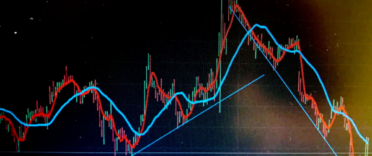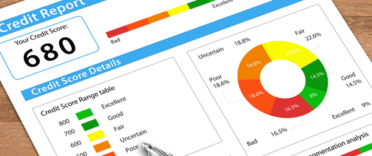Episode 357 - On this week's podcast I discuss NFTs. I explain what an NFT is, how an NFT works and what types of NFT can be bought and sold. I also explain the process of buying and creating an NFT as well as the risks involved.
Join the MTTM Community group, a friendly community that allows like-minded listeners to ask questions and chat.
You can also listen to other episodes and subscribe to the show by searching 'Money to the Masses' on Spotify or by using the following links:
Abridged transcript - Episode 357
Damien Fahy 1:13
An NFT is a non-fungible token and in this podcast we’re going to explore the NFT phenomenon. It isn’t going to be a promotion of NFTs, we're just trying to give people some insight. Equally, we're going to talk about the risks involved.
If you haven’t already, first listen to podcast episode 321 where I talked about everything to do with cryptocurrencies.
The blockchain is where cryptocurrencies will reside. You have a crypto wallet, which allows you to interact with the blockchain, and therefore buy and sell cryptocurrencies if you want to or use them to make transactions and buy things. Rather than just having cryptocurrency transactions that are contained on the blockchain, you can also have something called tokens and this is particularly relevant to the Ethereum blockchain, but not exclusive to it.
Tokens have a use in specifying ownership of particular items and those items could be digital items or offline items.
There are two types of tokens:
1. Fungible tokens - Fungible means that the token represents something that there can be lots of examples of, it's not unique in any way
2. Non fungible tokens (NFTs) - Represent something that is unique
As an example, the Mona Lisa is unique so is non fungible. A £10 note is fungible as whether you have one £10 note or another £10 note is irrelevant.
Due to the way the blockchain works, an NFT could be associated with something that is a physical asset, but it could be used as a digital certificate, a way of validating authenticity and ownership of something in the real world. By that NFT being recorded on the blockchain, which can't be tampered with as the technology is very secure, you could therefore transfer ownership of something by trading or transferring that NFT to somebody else. At the moment NFTs are mostly associated with digital assets. So the NFT is essentially a little box that is on that blockchain and has some information about the item that it represents, in terms of ownership.
In early 2021 you started to get a lot of talk about NFTs because people were starting to try to take ownership of certain memes. This may sound strange to lots of people but if you think of the offline art world, you can compare it to people who want to own pieces of art. People make copies of art pieces all the time but it’s desirable to own an original. It’s the same with digital items e.g. the first tweet. NFTs contain something called a smart contract that holds information about the asset that's associated with it. It can also point to where an image that you now have ownership of is stored. Within these contracts it usually states that you have ownership of the original item but you have no ownership of the copyright. The original creator has the copyright, and they have the reproduction rights of that original item. This is a completely unregulated environment. Andy is going to explain more.
Andy Leeks 12:56
Art is the primary area where NFTs are focused. There are lots of digital, unique images that people can essentially buy and trade. You can create NFTs as well as buying them.
The number one platform at the moment that’s mentioned everywhere is a company called OpenSea. There are a number of NFT opportunities on there where you'll be paying in Ethereum through your wallet. There are other companies such as Rarible, Foundation, Axie Infinity Market and NBA Top Shot.
Damien Fahy 14:50
If you look at those platforms, you'll be scrolling through imagery, similar to a sea of eBay images that you can click on. It will tell you the price of the image, the NFT, and how much it will cost. You'll see the transaction history of who previously owned it and how much they bought it for. The application of NFTs is much broader.
Andy Leeks 17:35
NFTs are very attractive to those who enjoy collecting. You can go online and see collections and what you own. For example, on the OpenSea platform there are unique illustrations that have been licensed by Pokemon to be sold as NFTs. They're very sought after and there are only a few of them so that creates a buzz as they’re unique items that people want to buy and own. They can either go up or down in cost, and they can trade those if they want.
Damien Fahy 19:05
NFTs can also be associated with real physical things as well, such as property.
Damien Fahy 20:20
The problem you need to be aware of is that this is unregulated. Some people feel that they need to be involved and buy NFTs after hearing many influencers say that it’s the next big thing, but it doesn't mean that you have to be part of the NFT phase right now. It’s a very strange place in my view. That doesn't mean it's not going to evolve just like the internet did. You might want to try and understand what's going on with it but you have to be aware that it is almost like a bit of a craze. Often an NFT might be associated with a project of some kind. The people who mint and create the NFTs and then start selling them in the marketplace, might generate hype around them. That's how they start to get people buying them.
There are also associated projects. They might say that with the money they're going to get from selling these NFTs, they're going to go and create something else e.g a computer game. So the hope would be that your NFT associated with this very successful project might then go up in value. That’s how some of these things are marketed. You have to be very careful because it’s a world of lots of promises and quite vague descriptions. Fundamentally, you're owning something that lives on the blockchain. You're owning an NFT and projects can either succeed or fail. It has a hint of people trying to get into early tech startups and that fear of missing out which you need to be careful of.
Andy Leeks 24:37
I’m going to talk about some of the weird and odd things that I found in the NFT world. I was drawn to the music side of things and came across audioglyphs. They live in the music section of the NFT world and they are randomly generated clips of infinite audio that is playable through your computer. A computer has come up with some code to create this audio that's unique, and you would own that audio. If you want to, you could trade it.
There is interactivity of some of these NFTs. They've created an element of gamification and synchronisation between the NFT and technology. For example, there is one set of NFTs that are called Cool Pets and you buy a random NFT that's purely got a number associated with it. It’s an image of an egg that will generate into its final form, which represents one of four elements: grass, fire, water, or air. This is very similar to how Pokemon works. Users can then evolve each pet through a gamified experience and your final pet that you end up with is one of 17 million possible outcomes. So you can see that they've actually integrated an NFT, which you buy, and then through gamification, and through interaction through the application, you end up with your final NFT, whatever that will be, because it will evolve into x. There are over 18,000 eggs available in this particular Cool Pets NFT. 10,800 are owned, so there are about 8,000 eggs available to buy. The prices range from one Ethereum to 1,200 Ethereum. At the moment, Ethereum is trading at £2,297 per coin so the cheapest egg is around £2,200 and the most expensive egg you can get on there is over £2.75 million.
Damien Fahy 27:46
Let's say we wanted to sell this podcast as an NFT. We'd create an NFT, we'd mint one. We could use something like OpenSea. You'd need a wallet that's compatible with the Ethereum blockchain so we’d use something like MetaMask or Coinbase which can provide you with a wallet in which you can therefore interact with the blockchain. Don't forget things like Coinbase are just crypto platforms, so they are like the Hargreaves Lansdown of this world. Once you’ve signed up, you’ll have to pay a creator fee of 2.5% of any sale that you have. This is just a broad example as things will change. You then make a file and you upload it. Once you've uploaded the file, you can also choose to earn some royalties if and when it’s traded in future. You then choose the blockchain that you're going to put it on. A lot of people seem to pick something like Polygon which works with Ethereum coins but also has relatively low fees. Then once you've minted your NFT, you can then list it, and then people can buy and sell it. That is how you could in theory sell this episode as an NFT. But people don't own the copyrights of it as I've mentioned before.
So that is the dream world of how people could turn their digital art into something that people could buy and sell. I've read around this topic quite a bit and there are some negatives that seem to be out there where the royalties don't always seem to get paid and that can be partly because of the way the platforms work in terms of when a transaction occurs. So things don't always run as smoothly as they should do.
Also, nobody might want to buy the Money to the Masses NFT podcast. So therefore we'd have done all that and not actually achieved anything.
Don't forget, in order to be able to buy and sell, interact with this world, you're going to need cryptocurrencies and there are fees associated with turning your real money into cryptocurrencies as well.
So the NFT universe is fascinating. It's something you're going to read more and more about but you've got to be aware of the risks. I don't think people should rush to engage with it because there's a lot going on. At the moment there are some wild things that are being bought and sold on there by people who may, unfortunately, in time lose their money.
As a general point, not just related to NFTs, if you're ever buying and selling something based on a lot of high potential promises or hope, that’s a high risk strategy. That hope doesn’t just include the hope or promises about what the item might become, but also that someone might want to buy it from you in the future. That is a high risk strategy if you're going to try and make money over the long term. It’s speculation rather than investing in my opinion. That is one of the big problems that is going on inside the NFT world and outside of it. So it's a warning to people who want to get involved.



